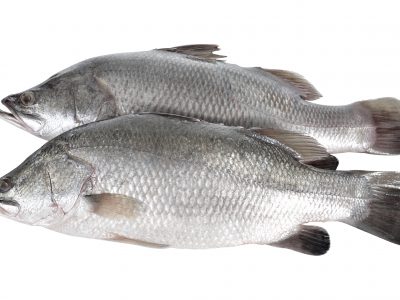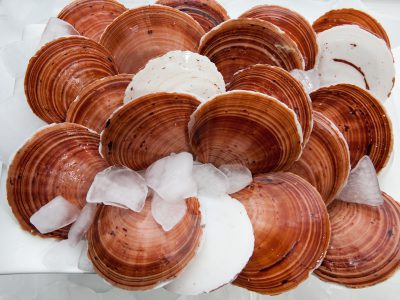When you hear the words “start up,” you probably don’t imagine an oyster farm situation on the southern east coast of Tasmania. But that’s just one of the ways Scott Brooks’ story is refreshingly special.
Scott started in the seafood export business a young age and “converted” to oyster farming in his early 30’s. He’s been in the business every since, but the past 10 years have been the most pivotal.
In 1996, Scott decided he didn’t want to adhere to the norm of buying into existing leases or expanding farms. Instead, he wanted to launch a new oyster farm. With the vision of a dedicated group of individuals a 10-year plan was formulated. A design budget, environmental systems, a property lease, and a team of hard workers were all built and put in place. It was a year and a half before he sold his first oyster, and half a decade before everything was running full steam, but eventually, he built a successful oyster farm totally from scratch.
Today, Ironstone Oysters are recognised as some of the best in the Australia. What makes them so special? According to Scott, it comes down to two things: the farmer doing the right thing – properly caring for size, shape, and stock – and environmental factors. These include water flows, algae, and the characteristics of the bay, which make the oysters unique.
Ironstone now has two different farms. The first, at Island Inlet, is situated next to a vineyard, surrounded by apricot trees and cherry orchards. Volcanic ironstone rock encloses the bay, giving the molluscs their name. Here, the oysters are grown in the ever-changing tidal flows fed by Frederick Henry Bay, which in turn are fed by the Southern Ocean waters. These conditions make for oysters that are both salty and sweet. At the second location, a little further north at Blackmans Bay, oysters are farmed in oceanic waters at a greater depth, which produces a wider, deeper cut oyster that’s slightly saltier than its Island Inlet counterpart.
Scott and his team truly believe their oysters taste better than others, but don’t worry – it’s not just the supplier that thinks his product is the best. Each year, tourists flooding Tasmania often go out of their way to seek out Ironstone’s gems. There are many restaurants that now request only Ironstone’s oysters. That kind of feedback says a lot about the quality of this product. Not matter which farm they come, these sought-after oysters are known for their consistency, taste, and quality.
According to Scott, everything they do at Ironstone is sustainable; from sourcing their spat from a hatchery right through to the timber they use for their racks. “If we ever have to pull the pin and pack up the farm, within three months of pulling out the last post you will never know that we had ever been there.”
With such low environmental impact and such high quality oysters, Scott has a lot to be proud of. Growing oysters, categorising them by size every 10-12 weeks, and caring for them for 2 years until they’re market-ready is tough work, but it’s rewarding. From the time Scott launched the start up to his upcoming 10-year milestone, he hasn’t made any sacrifices in the way of ensuring full maturation, a quality product, sustainable practices, and continued innovation. “We started off as a juvenile farm, growing oysters for other farms to fatten off, but now, we’re doing it all, and pushing the boundaries to do even more,” he says with enthusiasm. The process ultimately gives people something that they love – this, and the fact that he gets to play with boats every day of the year – makes everything worthwhile for Scott.
Supply Update – What’s Fresh?
PRAWNS xxx Gold Coast Marine Aquaculture are likely to finish harvesting the current crop of fresh Black Tiger Prawns in late February.xxx xxx Seafarms and Tru Blu will commence harvesting Black Tiger Prawns in mid February. These will be mainly 21-30/lb grade at the beginning, with 16-20/lb and 10-15/lb available closer to Easter. xxx Continue below for oysters, shellfish and finfish...



